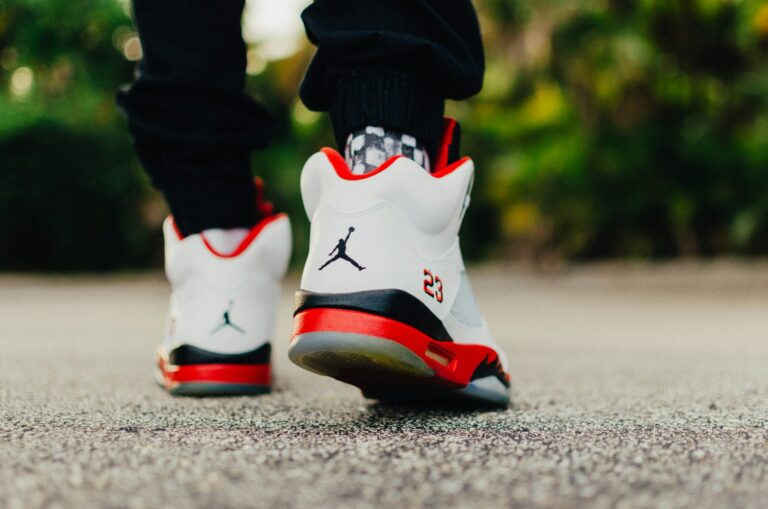When starting a business, one of the first things you need to find is a name for your brand. It can be tough to come up with something original and memorable, but some techniques can help.
This article will discuss some of the best ways to find a solid name for your brand. So, if you’re struggling with this step of your branding strategy, read on!
Proven Systems for Business Owners, Marketers, and Agencies
→ Our mini-course helps you audit and refine an existing brand in 15 days, just 15 minutes a day.
→ The Ultimate Brand Building System is your step-by-step blueprint to building and scaling powerful brands from scratch.
Table of Contents
What is a brand name?
A brand name is a unique and memorable name used to identify a line or a family of products or services offered by a company. The goal is to make the name distinguishable from other brands in the marketplace, which in turn will build brand equityBrand equity represents the value of a brand. It is the difference between the value of a branded product and the value of that product without that brand name attached to it. More.
For example, Canon is the brand name used on all the products offered by Canon Inc. – a Japanese corporation selling photography equipment and other technological products. In this case, the company name and the brand name are the same.
Other companies chose a different strategy by assigning some brand names that are different from the company’s name. This is the case of Procter & Gamble, an American consumer-goods company that owns many brands such as Oral-B, Pampers, and Ariel.
Why is brand naming important?
Here are four main reasons why a brand name matters:
- Brand recognition: First and foremost, a brand name is one of the first things customers will notice about your business. It’s often the first impression they’ll have of your company, so it’s essential to make it a good one! A name is a valuable part of your brand identity and can help customers identify and recall your brand within the marketplace.
- Brand differentiation: a good name can make your brand stand out in a crowded marketplace. Take an example from the technological industry: in a pool of terms such as Dell, Lenovo, Sony, or Samsung – a name like Apple suddenly stands out from the crowd. Apple is a simple and easy-to-remember word that differs from the other brand names in the industry.
- Brand names can convey certain emotions: brand names are words, and when people hear them, they can feel certain emotions or preconceived conceptions about them. That’s why it’s so important to do proper research to ensure that the name will convey the appropriate emotions and positive brand associations. A relevant example of this is Calm – an American software company that offers guided meditations and sleep stories, among other products. The brand’s name – Calm – directly conveys the benefits of its products, which are to reduce stress, practice meditation, and feel more relaxed. It is also a word that is easy to pronounce in many languages.
- Brand names are a long-term asset that can build brand equity: of all the elements that form a brand, the name is likely to last the longest and has to remain relevant over time. In fact, a company can decide to create new communication campaigns, modify a logo, or refresh a packaging design, but will most likely keep the same name over the years. Therefore, a strong name can help you build brand equity. This is the value that customers associate with your brand beyond the product or service you offer.
Ten factors that make a good brand name
So, how can you make your brand name as good as possible? There are many types of names, but the strong and effective ones have a few traits in common. Here are the key characteristics of a good name for your brand:
1. It’s memorable
The best brand names are the ones that customers can remember easily. This is especially important if you’re in a competitive market where customers have many options to choose from. A name that’s easy to remember will help you stand out from the crowd. Then, when customers are ready to make a purchase, memorable brands are more likely to come to mind.
2. It’s meaningful
The name should also be meaningful to your target audience. It should represent what your brand stands for and convey the benefits of your product or service.
3. It’s short, sweet, and to the point.
Short and direct terms are easier for customers to remember (see point #1) and less likely to get lost in the shuffle. Additionally, a more succinct brand name is often more versatile – it can be used more efficiently in various marketing channels and across different devices.
4. It’s easy to spell and pronounce
This point may seem like a no-brainer, but it’s important to make sure your brand name is easy for customers to spell and pronounce. If it’s not, you run the risk of customers getting frustrated or forgetting your brand entirely.
5. It’s unique
In today’s crowded marketplace, it’s crucial to have a name that stands out from the rest. Also, if your name is too similar to an established company, it may give the impression that you are copying them and that your brand is inferior.
6. It’s positive
Be careful not to use words that have a negative meaning. In rare cases, a name might have a profoundly negative connotation in another language; this should also be considered.
7. It’s protectable
Choose a trademarkable name and see whether the related web domain is accessible and if it can be trademarked. A trademark will enable you to safeguard it legally, both online and offline.
8. It’s likable
You and other relevant individuals must enjoy and identify with the brand! This is what will bring you all together in this fantastic brand trip.
9. It has staying power
The best names are the ones that will stand the test of time. Avoid trends or fads when choosing a name for your brand – instead, opt for something that will be relevant for years to come.
10. It’s available
Before settling on a brand name, remember to do a thorough search to make sure it’s available. You don’t want to choose a term only to find out later that someone else is already using it.
Tips on how to come up with a brand name

Before we start, we want to acknowledge that finding the best name for your brand is not an easy task, and many people feel stuck at this stage of their brand/business strategy.
Hiring an agency or a specialist in brand naming is possibly the best option to create the name of your new brand. This is because your brand name is one of the most critical aspects of your business. It’s what customers will see and hear every time they interact with your company, so it’s essential to choose a name that conveys the right message about your brand.
If you are an entrepreneur, you may be starting with a small budget. If you cannot afford to pay for the services of an agency or a professional, we hope that this section will provide you with some key tips and guidance for this (sometimes) challenging step.
Step 1: Define what you would like to communicate with the name
The right name should reflect who you are and what your company does directly or subliminally. For example, you could think about which part of the brand you want to emphasize with the name: is it the industry? The brand purpose? The products? The brand’s cultural origins? The brand’s expertise? This step works best with a team of people, as more heads will generate more ideas.
Step 2: Think about what makes your brand unique
Remember that the name should represent who your brand is and highlight its own identity. It is important to stay different from the competitors by thinking about what makes your brand different and unique.
Step 3: Brainstorm
Brainstorming is a group technique that aims to generate a list of possible names. Here are some factors to consider:
- Include several participants in the brainstorming session and anyone who offers to help: partners, potential customers, friends, and staff. Remember that several brains are always better than one!
- Create a comfortable environment where people feel relaxed.
- Write down the ideas on a shared document or a board
When you think your imagination has run out, try some of these tips:
- List all the adjectives that describe your product/brand.
- Narrow down the list to a few key adjectives. You want customers to think of these words when they see or hear your brand. For example, if you’re selling eco-friendly cleaning products, some good adjectives to describe your brand might be “natural,” “sustainable,” and “environmentally friendly.”
- Think about how you want your consumers to feel when they interact with your brand
- Try different types of brand names:
- Based on a person’s name: it can be real (for example, the founder’s name) or fictional, such as Jane & Lily
- Descriptive: a name that portrays what you do or make. For example, Toys ‘R Us is a good brand name because it tells customers that the store is all about toys. Similarly, Ace Hardware is a good name because it informs customers that the store is a place to go for hardware supplies.
- Invented: a random and invented name or word, such as Pixar
- Image: use the name of a place, a mythological character, an animal, or any other imagery to create associations with the brand. Some brands that have used this naming strategy include “Nike” (named after the Greek goddess of victory), “Austin” (named after the city in Texas), and “Patagonia”, which refers to a geographical region of South America.
- Combination of words, letters, or numbers: If you’re still having trouble coming up with a name, you can always try using a combination of words, letters, or numbers. For example, some brands have used this strategy to come up with names like “3M,” “Xerox,” “Facebook,” and “eBay.”
- Use an online name generator and see if you can incorporate some of the results into the name list. You will be surprised how the new ideas will start to flow.
You found a brand name – what to do next?
1. Test the brand name with friends, family, and customers
After you’ve made up a name that might work for your business, it’s important to test them out with friends, family, and customers. See what they think of the terms and get their feedback. This can help you narrow down your list of potential names even further.
For instance, you might find that customers have difficulty pronouncing one of your brand name ideas. In that case, it would be best to cross that name off the list.
2. Check to see if the domain name is available
When you have settled on a brand, the next step is to check and see if the domain name is available. You want to make sure you can get a .com domain for your brand – this will make it easier for customers to find you online.
3. Register the brand name with the appropriate government agencies
It’s essential to register your brand name with the appropriate government agencies. This will help protect it and ensure that no one else can use it.
Some of the brand name registration agencies include the United States Patent and Trademark Office (USPTO), the Canadian Intellectual Property Office (CIPO), and the European Union Intellectual Property Services (EUIPO) in the European Union.
4. Start using the brand name in all your marketing materials
You can start using your new name in your marketing materials if you’ve made it through all these steps. This includes your website, business cards, social media accounts, and other marketing collateral.
Conclusion
Picking an excellent brand name is crucial for any business. As the first thing customers see, you want a brand name that is memorable, eye-catching, unique, and reflects your company well.
This process can be quite a challenge, but it doesn’t have to be such a chore. Hopefully, you now have a clear idea of how to choose a name that’s sure to attract attention to your brand.
By following the steps outlined above and working together with colleagues, friends, and family, you’ll be able to think of a meaningful and memorable brand name that can make you proud.
If you’re still having trouble coming up with a name, though, don’t forget that there are branding agencies and experts that can work with you on this. In fact, we recommend always seeking the help of branding experts, especially for an important part of the brand identity like this one.
What’s your experience coming up with a brand? Share your tips in the comments below.









